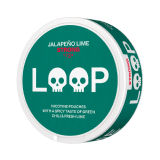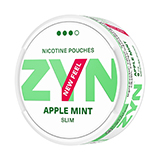Are you struggling to kick the smoking habit for good? Nicotine pouches have emerged as a potential aid for those looking to quit smoking. These oral nicotine products offer a different approach to traditional smoking cessation methods, sparking interest and discussions on their efficacy. With their rising popularity and colourful packaging, it’s essential to understand the science behind nicotine pouches and their potential impact on smoking cessation.
Nicotine, the addictive chemical found in tobacco, has long been a central player in the smoking cessation landscape. The evolution of nicotine delivery methods has led to the development of oral nicotine products, offering a new avenue for individuals striving to quit smoking. From assessing nicotine content to understanding the role of nicotine strength in quitting, there’s much to explore when considering the effectiveness of nicotine pouches in smoking cessation.
In this article, we’ll delve into the world of oral nicotine products and explore their potential as a tool to help individuals quit smoking for good. By understanding the science behind nicotine pouches and their impact on the body, we aim to provide a comprehensive overview of their effectiveness in smoking cessation.

Nicotine Pouches: What Are They?
Nicotine pouches have emerged as a modern nicotine product, offering an alternative to traditional tobacco usage. Unlike conventional smokeless tobacco forms like snuff or snus, these pouches lack tobacco leaf content. Instead, they come filled with nicotine, flavour enhancements, sweeteners, and plant fibres. Users place them between the lip and gum, enjoying the nicotine release for up to an hour without the need for smoking or swallowing.
The Appeal of Oral Nicotine Products
The appeal of oral nicotine products is multifaceted, addressing consumers’ desires for a tobacco-free experience coupled with customisable nicotine intake. Nicotine pouches, a leader in this market, offer a significant advantage by excluding tobacco leaves and, consequently, harmful compounds typically produced by tobacco combustion. This includes tar and carcinogens, known threats to health present in traditional tobacco products.
Exploring Nicotine Content and Products
When examining nicotine pouches, the diversity in nicotine content is remarkable. A comprehensive analysis of 44 different pouches uncovered that they contained anywhere from 1.79 to 47.5 milligrams of nicotine per pouch. Notably, these products contained about 86% free-base nicotine, which is a more readily absorbed form compared to other nicotine products.
This variation in nicotine levels means that consumers can choose a product tailored to their nicotine consumption preferences, which may facilitate smoking cessation efforts by offering a way to step down nicotine intake gradually.
Given that the absorption of nicotine occurs through the oral mucosa when placed between the cheek and gum, nicotine pouches present a distinctively different delivery method from the vaporised nicotine inhalation of e-cigarettes or the smoke of cigarettes.
Although these products don’t present the tar and carcinogenic chemicals inherent in leaf tobacco, they are not without potential adverse effects. Users may experience mouth or gum irritation, nausea, and possibly develop nicotine dependence. Despite these risks, many current and former tobacco users perceive them as less harmful to their health, reflecting a strong interest in these products as a harm reduction alternative.
The regulatory landscape for nicotine products is evolving, with the FDA in the States asserting control over some aspects while the full regulatory environment differs from that of traditional tobacco items. This nuanced oversight is something consumers and industry stakeholders must navigate carefully.
In sum, pouches have emerged as an appealing option for those looking to either diminish their use of traditional tobacco products or mitigate associated health risks, offering various nicotine strengths in a non-combustible, tobacco leaf-free format.

The Addictive Chemical: Nicotine
Nicotine is not just a substance; it is a highly addictive chemical that can ensnare users in its grip both physically and mentally. It acts swiftly upon entering the bloodstream, reaching the brain within a mere ten seconds. Once there, nicotine triggers a series of chemical reactions that may bring a sense of concentration and relaxation, alongside a pleasurable ‘hit.’ This powerful combination of responses makes quitting a strenuous challenge for those addicted.
Cravings for nicotine are a hallmark of physical addiction, but the battle doesn’t end there. Many users develop a mental dependence, consciously desiring the effects that nicotine provides. All of these factors contribute to the difficulty individuals face when trying to cease smoking or using other tobacco products.
The Rise of Flavoured Nicotine Products Could Help You Quit Smoking
The nicotine product landscape is adapting and expanding. Nicotine pouches stand at the forefront of this evolution, offering gradual nicotine delivery pathways that many users find more manageable. These products are commonly thought to be effective over a 12-week period for reducing nicotine dependency, assisting users in tapering their intake with the ultimate goal of quitting.
However, with innovation comes concern, especially when it comes to flavoured nicotine products. Flavours in nicotine products, including pouches, not only raise health concerns but also the spectre of these products acting as gateways to tobacco use. While nicotine pouches do not contain tobacco’s dangerous combustible elements and are thus perceived as a potentially safer alternative, the colourful packaging and enticing flavours they offer could result in a spike in nicotine use among the youth—a trend that needs careful monitoring and potential regulatory intervention.
The Evolution of Nicotine Delivery
The journey of nicotine delivery has seen a radical transformation over the centuries. Dating back to the indigenous peoples of the Americas, the tobacco leaf has been the cornerstone of nicotine consumption. Traditionally, nicotine was consumed by smoking tobacco, a practice that has persisted through time, becoming deeply ingrained in cultures around the world. But as our understanding of health risks associated with tobacco smoke has grown, so has the innovation in nicotine delivery methods.
Understanding the Spike of Nicotine in the Body
Upon the use of oral nicotine pouches, individuals experience what is often described as a spike of nicotine. This rise occurs when the pouch is strategically placed between the gums and upper lip, initiating the absorption of nicotine directly into the bloodstream. The nicotine spike is maintained for up to an hour, providing a steady and convincing substitute for the instant gratification once sought from cigarettes. Pharmacokinetics research indicates that although the nicotine content in pouches might be lower compared to some smokeless products, they deliver nicotine efficiently and at a pace comparable to that of traditional smokeless tobacco, like moist snuff.
The optimal absorption of nicotine from these pouches is not only quick but also free from the necessity to spit, a common action associated with many moist snuff products. Such immediate and adept delivery of nicotine makes pouches an appealing and practical option for those seeking smoking cessation. Research suggests the efficacy of nic pouches in alleviating withdrawal symptoms and aiding smokers in reduction or cessation efforts is comparable, if not superior, to that of conventional nicotine replacement therapies.
The Role of Nicotine Strength in quitting smoking
The process of quitting smoking can be formidable, and the role of nicotine strength in cessation aids is a critical factor to consider. Nicotine replacement therapy (NRT) products, including patches and gums, come in various strengths to match the levels of nicotine a smoker is accustomed to. The strategic use of these products can significantly alleviate cravings and withdrawal symptoms.
Stronger nicotine replacement options might provide more substantial relief for heavy smokers, creating a sense of satisfaction akin to smoking a cigarette. On the contrary, individuals with lighter smoking habits may require lower nicotine strengths to avoid overconsumption. The right balance is pivotal; it can make the difference between succumbing to relapse or progressing on the path to smoking cessation.
Tailored healthcare guidance is essential to identify the appropriate strength of nicotine for an individual. This personalised approach helps in gradually reducing dependence on nicotine, ultimately leading to a smoke-free life. Seeking the advice of healthcare professionals before initiating nicotine replacement therapy is paramount, as it ensures a well-structured plan to reduce nicotine use over time, with the ultimate goal of achieving complete independence from nicotine.

The Absence of Tobacco Leaf: A Healthier Alternative?
When exploring options to quit smoking, the absence of tobacco leaf in nicotine delivery methods has emerged as a pivotal selling point for alternatives like pouches. The exclusion of leaf tobacco from these products means that users aren’t exposed to the tar, carbon monoxide, and other hazardous substances typically produced through tobacco combustion.
Despite their smokeless nature, it’s crucial to note that nicotine pouches are not without their health risks. They still harbour the potential for addiction, albeit with reduced exposure to toxicants in comparison to smoking. However, these nicotine products are not yet formally recognised as cessation aids and can’t legally claim to facilitate quitting tobacco or reducing harm.
So, Can Nicotine Pouches Really Help You Quit?
Research suggests that while nicotine pouches are gaining popularity, their efficacy as a quit-smoking aid remains in review. Unlike cigarettes, which deliver a rapid spike of nicotine – typically in about five minutes – nic pouches can take a little longer to reach peak nicotine levels.
However, we’ve seen incredible results amongst those using pouches, and will likely continue to witness these positive results as time and technology evolves over the coming years.
Have you tried pouches as an aid to quit smoking? I’d love to hear your thoughts in the comments.



















